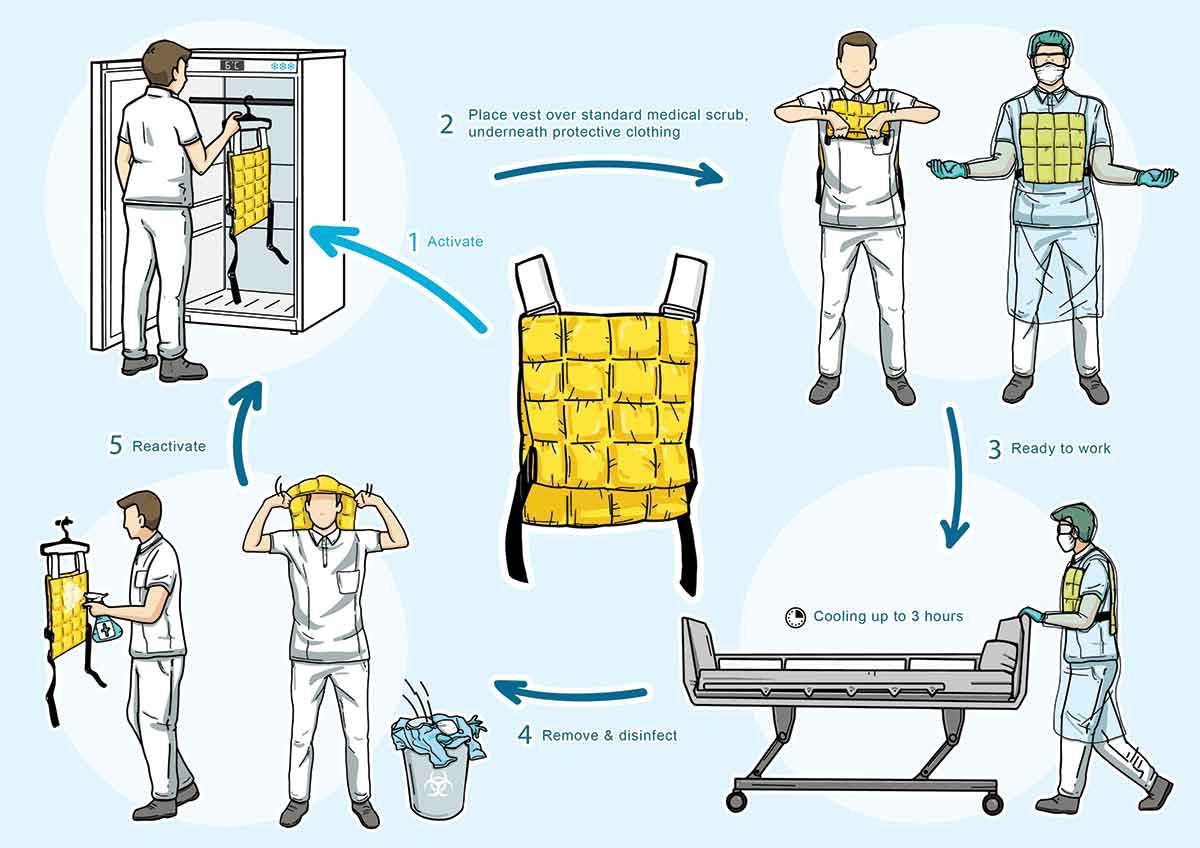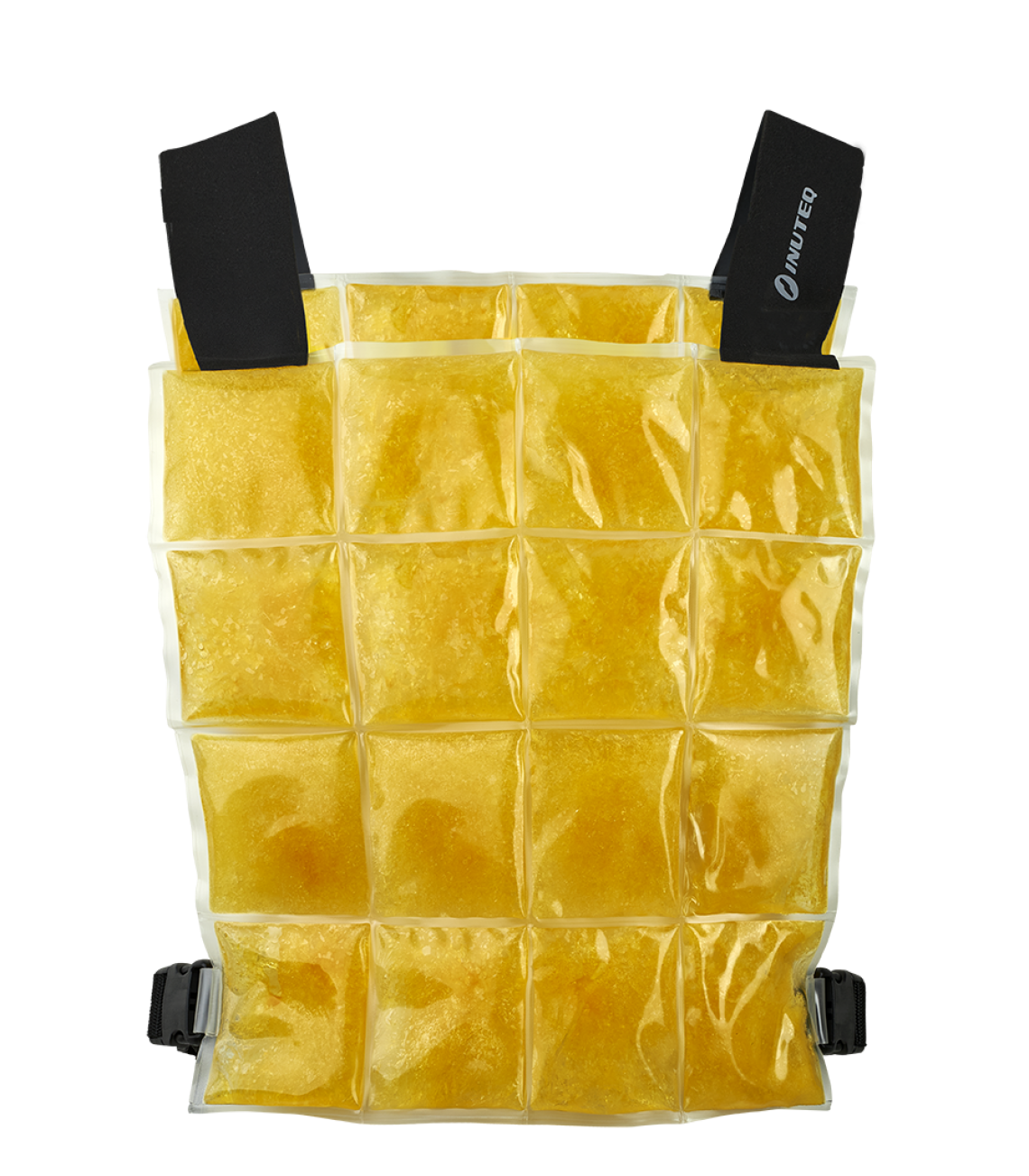
INUTEQ supplies cooling vests for research from Dutch Academic Hospital Radboud UMC
Cooling vests during a COVID-19 shift ensure that nurses experience less heat during their work and can therefore perform their work more pleasantly and comfortably. During their shift they wear protective clothing for three consecutive hours, under which the temperature can rise to about 36 degrees. The cooling vests offer such cooling that they are now part of the standard work clothing for nurses in the COVID nursing wards of Radboudumc.
Due to the high contagiousness of COVID-19, healthcare personnel have to work in protective but not or hardly ventilating clothing. Good protective clothing is essential in their work, but the temperature under these suits can reach 36 degrees, leading to reduced comfort. The cooling vests, actually developed for top athletes at the Olympic Games in Tokyo, were adapted and made ready for use in COVID care.
Cooling vests for top athletes
Thijs Eijsvogels, exercise physiologist and project leader of the Olympic Games project Thermo Tokyo, explains: “The top sports cooling vests were not immediately suitable for use, because they were developed for quick cooling before or after a physical exercise. COVID care is about long-term deployment, whereby the vests are worn during care activities. The vests keep cooling for a longer period.”
While the cooling vests were already in use, a study was ongoing into their effects. In this COOLVID study, conducted by TNO and Radboudumc, seventeen nurses from Radboudumc working in COVID care were followed. They were followed for two days; one day with and one day without a cooling vest. They wore the vest over their medical clothing and under the protective clothing. Among other things, the body temperature and heart rate were measured, as well as subjective measures, such as comfort and heat experience.
Less trouble from the heat during a shift
The results, now published in Temperature, show that the participants' body temperature rose slightly, but not enormously, even though the temperature under the protective clothing did. The cooling vest had little effect on body temperature. However, the heart rate was a few beats per minute lower on the days that the cooling vest was worn. But the biggest difference was in the subjective perception of the care providers. Yannick de Korte, PhD student in the physiologist department and co-researcher of the COOLVID study: “Without a cooling vest, almost 90% of nurses experience discomfort and warmth. Only 20-30% of the participants experience this with a cooling vest. The circumstances under which they have to do their work are therefore experienced as more pleasant and comfortable. Almost everyone says: I can work with a cooling vest as I normally work without protective clothing. ”
Medical Heat Stress
The COOLVID study was conducted within the Medical Heat Stress project, by TNO, as part of its brains4corona program, and Radboudumc, building on the Thermo Tokyo project. The study was funded by ZonMw. The researchers have developed an infographic for the use of the cooling vests, which is translated into 9 languages and supported by EU Horizon 2020 (HeatShield # 668786).

Drawing: Radboud UMC
MORE INFORMATION ABOUT THE PCM CoolOver 21C / 70F

Our unique biobased PCM CoolOver is an one-size-fits-most PCM cooling vest.
This fabric-free CoolOver can easily be cleaned or sterilized which makes it also suitable for use in medical environments. The only USDA 100% biobased certificated and REACH registered PCM vest available on the market!
